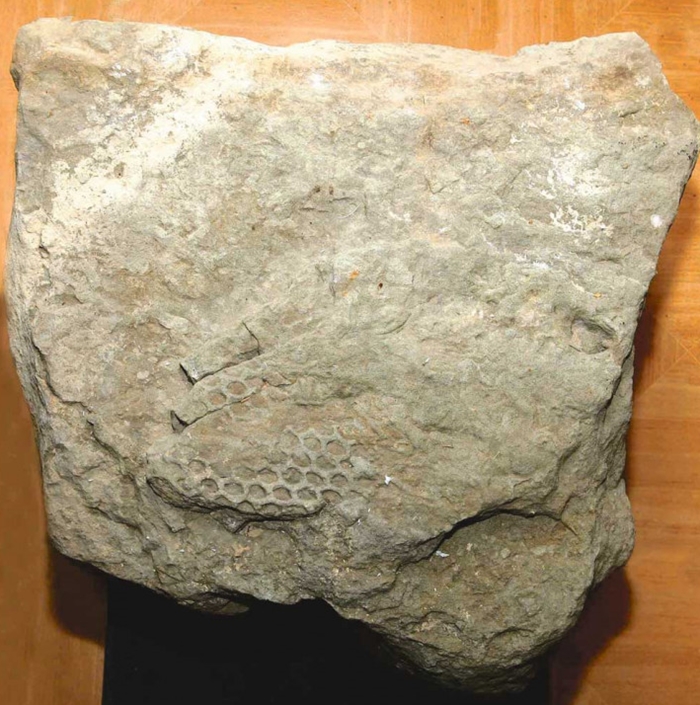A rock sample bearing the enigmatic traces of an unknown ancient organism, likely a paleodictyon, has been found in Turkmenistan. Estimated to be 60-80 million years old, the finding was handed over to the State Museum of the State Cultural Center of Turkmenistan.
The imprints resemble honeycombs, with grids of hexagons measuring 8-12 millimeters across, covering an area of roughly 130-150 square centimeters. Discovered by environmental scientist Valery Kuznetsov in the Western Kopetdag near Magtymguly town, the fossil have not been found on the territory of Turkmenistan before.
Dmitry Grigoriev, a paleontologist from the Russian Academy of Sciences, suggests the imprints could be the work of primitive organisms like sponges, algae, or deep-sea protists. He compares them to the “Meneghini paleodictyon,” named after its 19th-century discoverer, Giuseppe Meneghini.
“The fossilized result of the vital activity of this organism is similar to the Meneghini paleodictyon, named after the discoverer – paleontologist Giuseppe Meneghini, who discovered strange traces in Mesozoic sediments and classified them in 1850. A grid of honeycomb-like hexagons covered the stone. To date, several hundred such finds are known,” the scientist says.
The fossils akin to paleodictyon were discovered in the Atlantic Ocean in the late 20th century. Unlike the fossilized Turkmen specimen, these were living formation. However, directly observing these elusive creatures at their deep-sea geothermal vent habitats remains a challenge.
Scientists suggest that the hexagonal patterns on the fossil served as traps, capturing sediment particles and microscopic organisms. Thousands of such imprints cover the Atlantic seabed. ///nCa, 4 January 2024 [photo credit – Neutral Turkmenistan newspaper]
